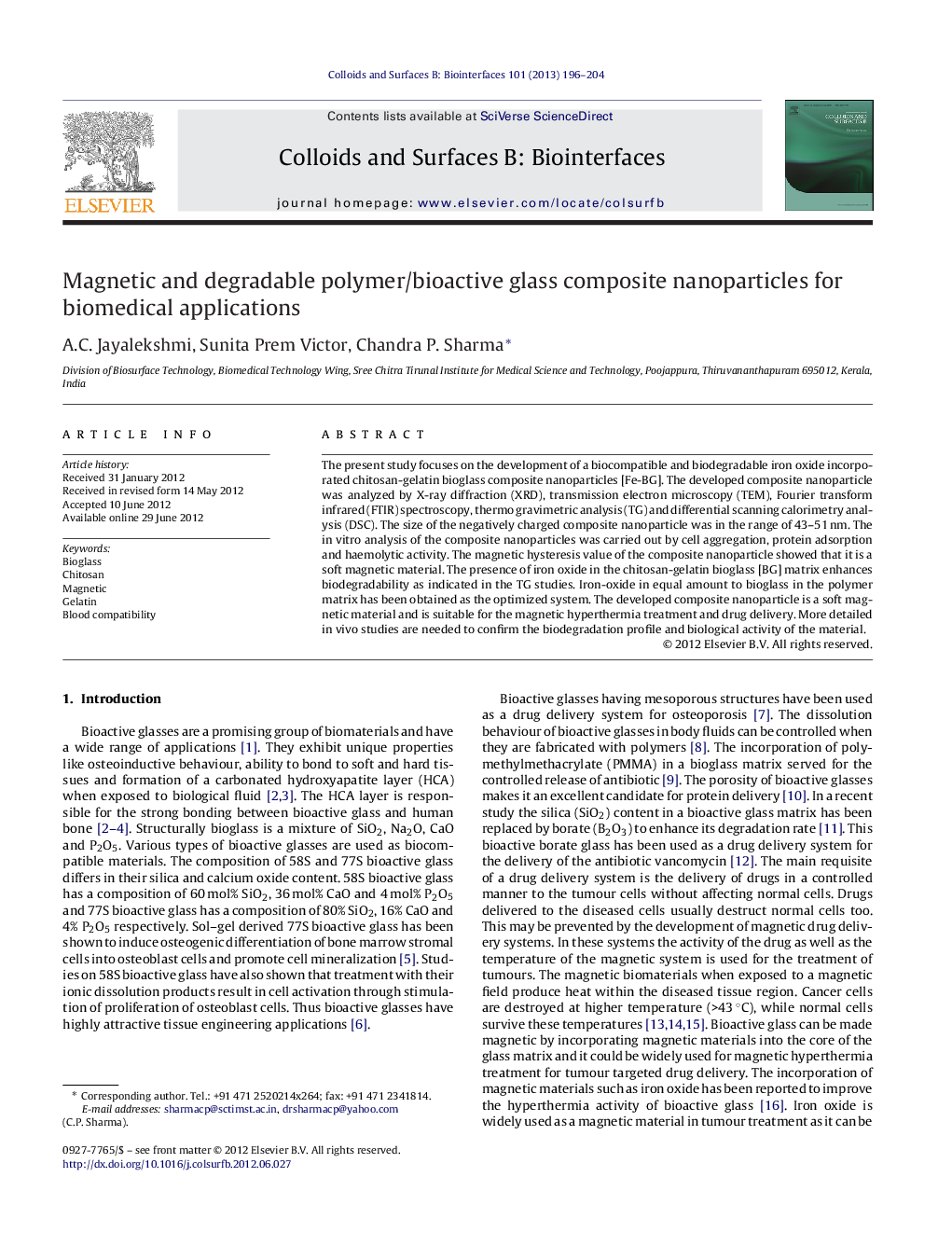| Article ID | Journal | Published Year | Pages | File Type |
|---|---|---|---|---|
| 600446 | Colloids and Surfaces B: Biointerfaces | 2013 | 9 Pages |
The present study focuses on the development of a biocompatible and biodegradable iron oxide incorporated chitosan-gelatin bioglass composite nanoparticles [Fe-BG]. The developed composite nanoparticle was analyzed by X-ray diffraction (XRD), transmission electron microscopy (TEM), Fourier transform infrared (FTIR) spectroscopy, thermo gravimetric analysis (TG) and differential scanning calorimetry analysis (DSC). The size of the negatively charged composite nanoparticle was in the range of 43–51 nm. The in vitro analysis of the composite nanoparticles was carried out by cell aggregation, protein adsorption and haemolytic activity. The magnetic hysteresis value of the composite nanoparticle showed that it is a soft magnetic material. The presence of iron oxide in the chitosan-gelatin bioglass [BG] matrix enhances biodegradability as indicated in the TG studies. Iron-oxide in equal amount to bioglass in the polymer matrix has been obtained as the optimized system. The developed composite nanoparticle is a soft magnetic material and is suitable for the magnetic hyperthermia treatment and drug delivery. More detailed in vivo studies are needed to confirm the biodegradation profile and biological activity of the material.
Graphical abstractFigure optionsDownload full-size imageDownload as PowerPoint slideHighlights► Iron oxide incorporated chitosan-gelatin-bioglass nanocomposite was developed. ► The size of the negatively charged composite was in the range of 43–51 nm. ► The nanocomposite is a soft magnetic material. ► The nanocomposites demonstrated minimal protein adsorption as analysed by PAGE. ► The nanocomposite could generate heat energy in an applied magnetic field.
